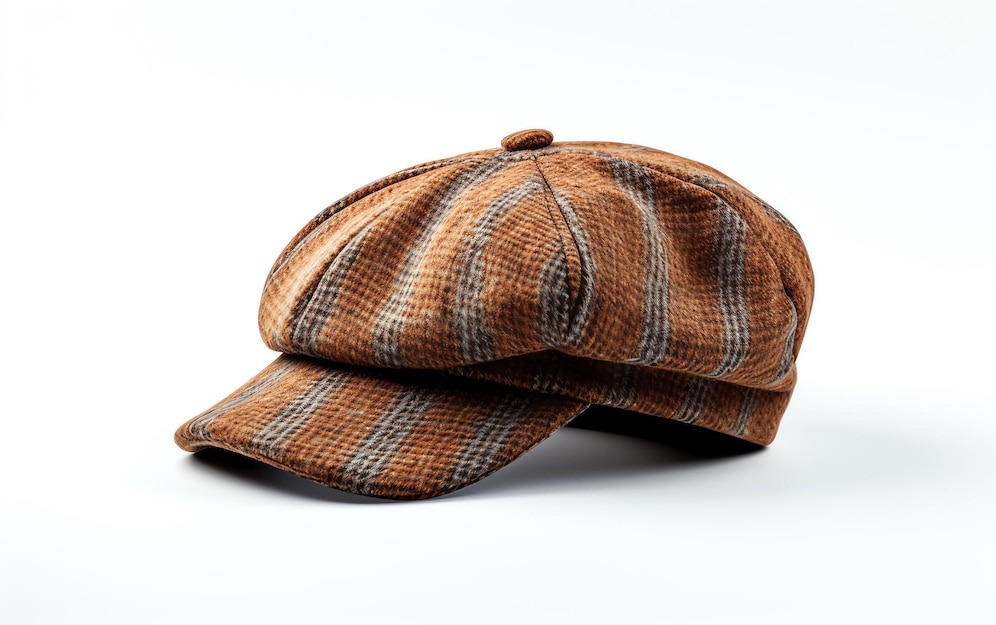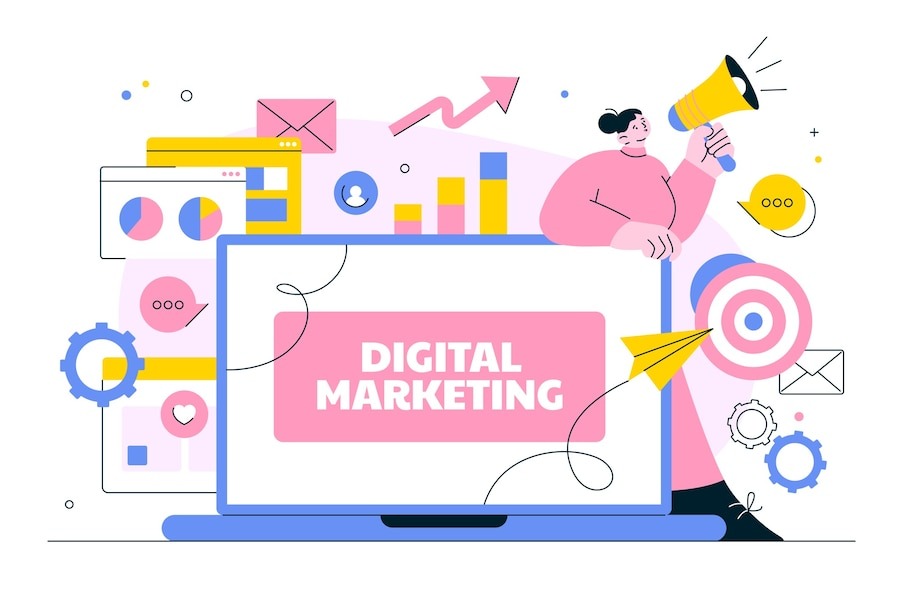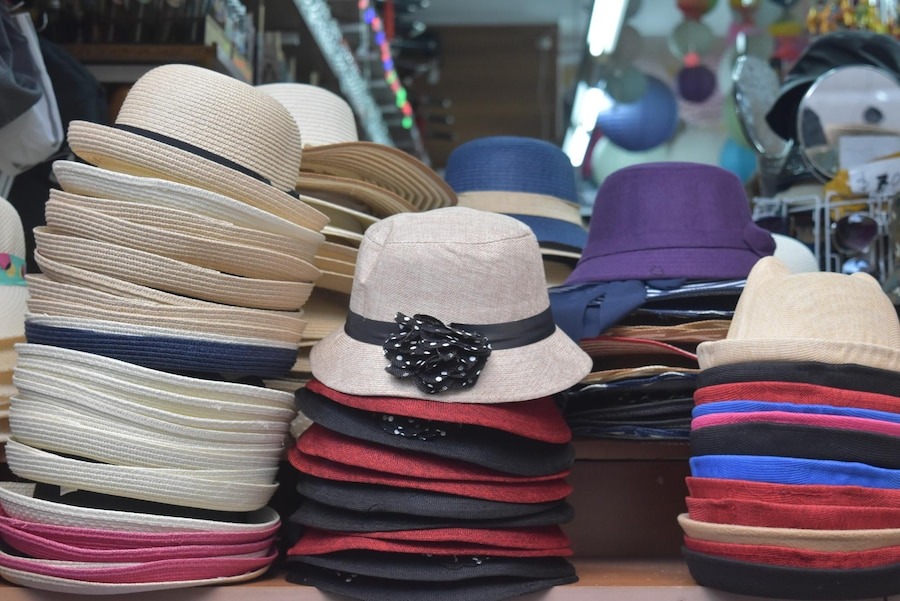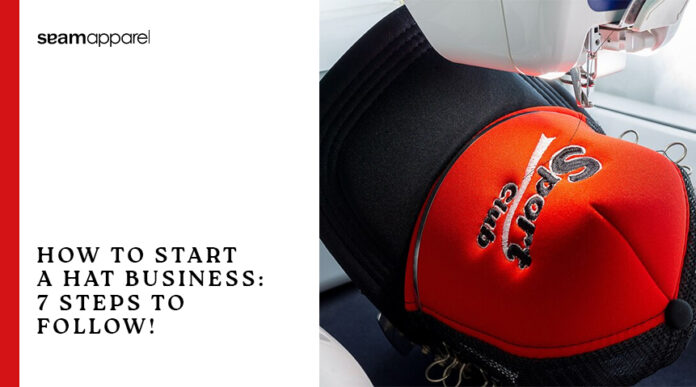Have you been thinking, why not turn your love of hats into a business? Starting a hat company is your chance to share your style with the world while doing what you enjoy. Hats have long been a popular accessory among people of all ages, whether they are wearing them for lovely afternoons spent on the beaches or seeing a new city.
In this guide, we’ll walk you through everything you need to know to turn your passion into a profession. How do I start a hat business? From choosing materials and designs to budgeting and marketing, we’ve got your hat-entrepreneur dreams covered. Let’s get started on the ultimate guide to how to start a hat company!
Why To Start a Hat Company?
There are many reasons why launching a hat business can be a wise decision.
Consumer demand: In addition to being a stylish adornment, hats are a year-round useful item. There’s always a need for hats, whether it’s to shield from the sun or stay warm in the winter.
Flexibility: People of various ages, genders, and backgrounds use hats, which makes them an adaptable commodity with a broad market appeal. This implies that there are numerous chances to broaden your product line and the possibility of building a solid consumer base.
Economical: A substantial sum of money is not needed to launch a hat company. Although they cost a little more than a T-shirt, you won’t have to spend a fortune to get started. Because of this, it’s a viable choice for people with limited resources.
Rising profit margins: Hat companies can make a lot of money. You can position your company for long-term success and high profitability by proficiently controlling expenses, negotiating advantageous terms with manufacturers, and delivering a superior finished product with exceptional customer service.
How To Start A Hat Business In 7 Steps
Here’s all you need to know about how to start a cap business if you’re sure you have some fantastic hat business ideas:

Conducting Market Research for Your Hat Company
Research is perhaps the most important and first thing to do when starting a hat company. You need to study the market in the region to determine where to buy hats in bulk and where to buy custom hats. You should also have a look at the newest models and styles that are in right now.
Research is critical to supporting consumer targeting. If you want to market to young people who adore TV shows and personalities, you can design the same headgear or use words from the program. You might attract customers by doing this. Additionally, if you are marketing to adults, you may offer them more elegant hats and well-made, respectable custom designs.
Choosing Your Niche: Types of Hats to Sell
Caps

Baseball caps are a popular choice for hat businesses. They’re versatile, affordable, and appeal to a wide range of customers. You’ll want to consider emblematic caps for sports teams as well as blank caps that people can customize. Trucker hats and snapback hats also fall into this category.
Beanies and Knit Hats

For cold weather, knit hats and beanies are always in demand. You can sell simple caps in a variety of colors and patterns, as well as hats with logos, stripes, and pom-poms. Slouchy beanies and ribbed beanies are stylish options. These hats are easy to make yourself if you want to get into hat production.
Fedoras and Newsboy Caps

To appeal to customers looking for a retro or upscale look, consider selling fedoras, newsboy caps, and other stylish hats. Wool, felt, and corduroy are popular materials for these hats. They come in solid colors as well as tweed patterns and herringbone. While these tend to be more expensive, they have a higher profit margin.
Specialty Hats

There are many other types of hats you can sell, like sun hats, wool caps, bowlers, top hats, berets, and visors. You may want to focus on a particular style that you’re passionate about. Some hat businesses specialize in steampunk hats, costume hats, or hats from a particular era, like the 1920s. If there’s a specific niche that interests you, you can build your business around that.
The type of hats you sell depends a lot on your target customers and personal interests. Think about the styles you’re most passionate about and the needs in your local area. You may want to start with one or two types of hats to build your inventory, then expand from there based on customer demand and feedback.
Designing Your Hats: Tips for Creating Unique Styles
Coming up with stylish and unique hat designs is key to standing out in this competitive market. Learn how to start a hat brand by putting in the time to develop eye-catching styles that showcase your creativity.

Pay Attention To Detail
It’s the little details that make a hat truly unique. Add touches like custom linings, embroidery, patchwork, or distressing. Vintage-inspired styles with a worn, lived-in look are popular. You can also incorporate trendy accents like pom-poms, tassels, or statement patches.
Focus On Fit And Comfort
Well-fitting, comfortable hats will keep customers coming back. For fitted styles, invest in equipment to properly size and shape the hats. Beanies and slouchy caps should feel loose and breathable. Consider making adjustments like an adjustable strap or bungee cord to provide flexibility. The ultimate goal is for your customers to forget they’re even wearing a hat because it feels so natural.
Build A Cohesive Collection
Develop a cohesive collection of complementary styles, colors, and themes to give your brand a distinct look and feel. For example, focus on styles inspired by a particular era, like newsboy caps and fedoras from the 1920s and ’30s. You can also base a collection around a signature color palette or unifying details like lace, denim, or faux fur accents.
Sourcing Materials and Manufacturing Your Hats

Finding Quality Materials
The materials you choose are crucial in determining the quality, durability, and price point of your hats. Research hat materials like cotton, wool, leather, and canvas to determine what will work best for your specific hat designs. Look for suppliers that offer high-quality, ethically sourced materials. For custom designs, you may need to order materials in bulk to keep costs down.
Choosing A Manufacturer
Unless you plan to manufacture the hats yourself, you’ll need to find a manufacturing partner to produce your designs. Consider domestic manufacturers for higher quality and easier communication, or overseas manufacturers for lower costs. Discuss your design ideas, materials, and budget with potential manufacturers to determine if they can meet your needs. Look for manufacturers that are experienced in producing high-quality headwear, open to custom designs, and willing to start with smaller production runs.
Producing Samples And Revisions
Work closely with your chosen manufacturer to produce initial samples of your hat designs. Review the samples carefully and request any needed revisions to the materials, sizing, stitching, or other details. It may take a few rounds of samples and revisions before the hats meet your standards of quality. Don’t proceed to full production until you’ve approved the final samples.
Determining A Production Schedule
Discuss timelines for production with your manufacturer based on your inventory needs and sales forecasts. For seasonal designs, you’ll want to plan production far enough in advance to have stock ready for peak selling periods. It’s a good idea to start with smaller production runs in case you need to make changes to the designs or materials for future runs. You can then ramp up to larger runs once you’ve established demand and worked out any kinks.
Marketing Your Hat Business: Online and Offline Strategies
To get the word out about your new hat business, utilize both online and offline marketing strategies.

- Online, focus on social media platforms like Instagram, where visual content reigns supreme. Post eye-catching photos of your hats, especially ones where people are wearing them. Engage with your followers by replying to their comments and messages. You can also start a blog on your website to establish yourself as an expert in the hat industry. Write posts about the latest trends in headwear or style advice for different seasons.
- Offline, look for opportunities in your local community to raise brand awareness. Set up a booth at craft fairs, farmers markets, or seasonal festivals where people will appreciate your product. Offer promotions and discounts to encourage sales. You might also reach out to local boutiques about carrying your hats on consignment. This allows them to test out your product without the risk of buying it upfront. If they sell well, the store may place bulk orders.
- Don’t forget old-school methods like print advertising in magazines targeted at your potential customers. Place ads in hobbyist publications for horseback riding, gardening, or hiking clubs. People engaged in outdoor activities make up a large portion of the hat market. Sponsor related events by donating free hats in exchange for promotional opportunities. Your logo and information will gain exposure to all attendees.
Setting Up Your Online Store: E-commerce Platforms and Payment Systems

Choosing an E-commerce Platform
The first step to starting an online hat store is selecting an e-commerce platform to build your website. Some popular choices for small businesses include:
- Shopify is user-friendly, affordable, and ideal for beginners. It has beautiful themes made for clothing brands in stores and built-in marketing tools to help promote your products.
- BigCommerce is flexible and scalable and offers useful features like product reviews, coupons, and gift cards. It has a bit of a learning curve but is a powerful platform for growth.
- WooCommerce is a free, open-source plugin that turns your WordPress site into an e-commerce store. It requires more technical skills to set up but it gives you full control and customization over your storefront.
- Etsy is a popular marketplace for handmade goods. It has low fees and lets you open a shop instantly. However, you have less control over the overall brand experience, and customers may see you as “just another Etsy store.” For an independent hat business, your website is better for establishing your unique brand image.
Implementing a Payment System
Once you have a website, you need a way to accept payments from customers. The most common options for e-commerce stores include:
- PayPal is free to set up and one of the most trusted payment methods online. Customers can pay with their PayPal balance or credit or debit cards. Transaction fees are reasonable for small businesses.
- Stripe: Used by companies like Lyft, Instacart, and Zoom. Stripe charges a small percentage for each transaction but has no monthly fees. It’s easy to integrate into most e-commerce platforms and has strong fraud prevention.
- Square: In addition to credit card processing, Square provides point-of-sale systems for physical stores. Online payments charge a flat rate for each transaction, with no monthly fees or long-term contracts.
Offering multiple payment options gives your customers flexibility and instills trust in your business. Be sure to also have a secure SSL certificate installed on your website to encrypt all payment information and personal details. With the right tools in place, you’ll be selling hats in no time!
Preparing and Completing Your Orders Easily

Customer service is essential for order fulfillment to go smoothly. Customer service protocols will decrease refunds and promote recurring business. The outstanding organization will lead to satisfied customers.
Order cancellations and out-of-stock merchandise are also things you will most certainly not desire. Make sure you never run out of hats to sell to your clients, and try to minimize cancellations.
As soon as possible after making a purchase, make sure to create and print shipping labels. You need software that automatically alerts clients on the status of their orders as soon as they are dispatched.
How Much Does It Cost To Start A Hat Business?

You really want to know how much does it cost to start a hat business? Here you are; depending on your choice of business strategy, the cost of starting a hat business can differ considerably. Certain tasks, like promoting your goods, can be completed for nothing. To save money on inventory, you can also choose to use a dropshipping business model.
However, $500–$800 is the right amount to launch a hat business from home. A little marketing budget and inventory are part of this.
A budget of $2000–$4000 would be necessary if you intend to operate on a much greater scale. The expense of hosting your online store must also be taken into account. For example, the basic plan on Shopify is $24 a month.
In general, how much you ultimately require will depend on how big of an inventory you want to have and how many marketing tactics you want to use.
How Much Do Hat Makers Make A Year?
As a hat maker, your annual earnings can vary depending on several factors, like your experience, location, education, and job responsibilities. According to the Bureau of Labor Statistics, the median pay for craft artists, which includes hat makers, is around $30 an hour or $62,000 a year.
If you’re just getting started in the hat-making business, you can expect to make between $25,000 and $40,000 a year to begin with. Once you gain more experience, build up your portfolio, and establish a steady client base, an experienced hat maker’s salary typically ranges from $40,000 to $65,000 annually. Highly skilled custom hat makers, especially those with many years of experience, can make $75,000 a year or more.
Geography also plays a role in a hat maker’s earning potential. Hat makers in large cities and fashion centers like New York, Los Angeles, and San Francisco tend to earn higher pay than those in small towns and rural areas due to higher costs of living and a greater demand for custom millinery work.
Some hat makers earn additional income through retail sales, custom orders, teaching hat-making workshops, and selling patterns or kits. Many hat makers start their businesses and sell their creations online, at craft fairs, or in local boutiques to supplement their income.
As with any entrepreneurial endeavor, decision-making does come with a degree of uncertainty. The job market can fluctuate, and sales may be inconsistent from month to month or year to year. However, for creative individuals passionate about the craft of millinery, the rewards of running your own hat-making business can be very fulfilling.
Don’t let the possible difficulties stop you from designing and making exquisite, one-of-a-kind hats. You can build a successful career as a hat maker with talent, perseverance, and business savvy.
Is The Cap Business Profitable?

Is a hat business profitable? The cap business can be profitable if you go about it the right way. The hat industry generates over $10 billion in revenue each year in the U.S. alone, so there is a demand for stylish and high-quality headwear. However, as with any business, there are some key factors to consider.
Low Startup Costs
To get into the cap business, you don’t need a ton of capital upfront. You can design and source simple caps for a few thousand dollars to start. Focus on a specific niche, like trucker hats, snapbacks, or dad hats, and build up from there as your business grows. Keep costs low by printing small batches using inexpensive materials and minimal decoration.
High Perceived Value
Although caps are cheap to produce, customers are willing to pay a premium for unique, fashionable designs. By creating eye-catching caps featuring trendy logos, phrases, or prints, you can charge $20–30 per cap, yielding a healthy profit margin. Limited edition or exclusive collections can command an even higher price.
Multiple Sales Channels
Hats are highly versatile products that can be sold through many channels. You can sell custom caps directly through your e-commerce site, set up a booth at local events like craft fairs, approach retail stores about carrying your line, and even sell blank caps wholesale to other customizers.
Low Barrier To Entry
If you have a creative eye and some design skills, the cap business is easy to get into. You don’t need any special training, licenses, or equipment to get started. All you need to do is determine your brand and product line, source materials, and caps, and then start designing and selling. This makes the cap business an ideal side hustle that you can launch while working another job.
Hat Trick Your Business!
Well, there you have it—an in-depth guide to everything you need to know about how to start your hat line! From coming up with a vision to sourcing materials, designing styles, pricing products, marketing your brand, and setting up an online store, we covered all the key steps to get your hat company up and running. At Seam Apparel, we’re experts at producing premium handmade caps in small batch sizes. It’s ideal for new enterprises or those who want to increase their product offerings.
We provide a large assortment of hat designs and personalization choices, such as patches, embroidery, and more. Additionally, our team of professionals is there to help you if you require any assistance with the design process.




